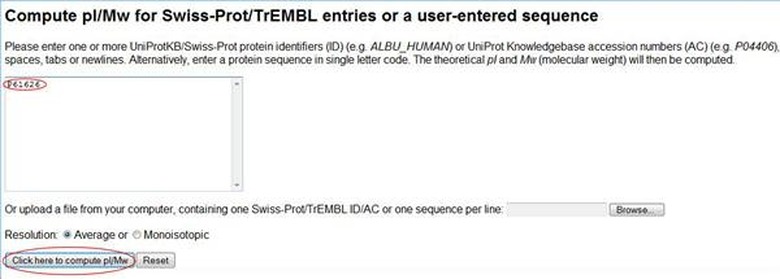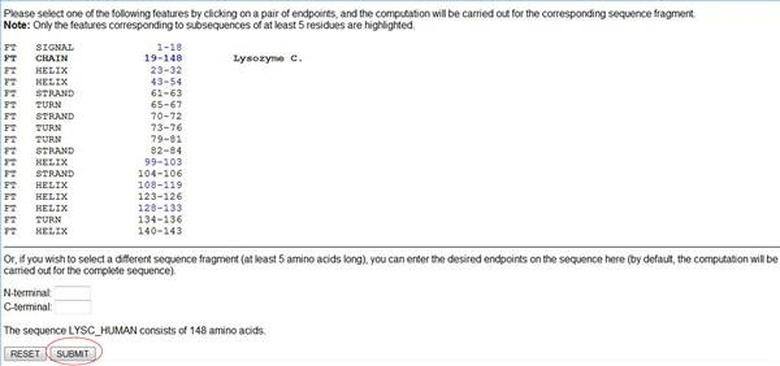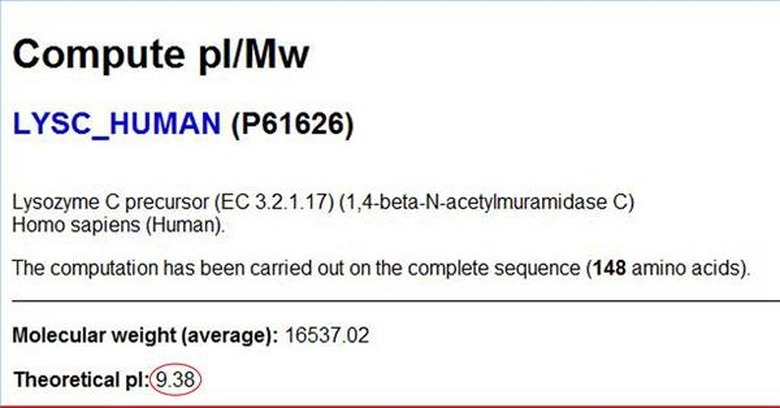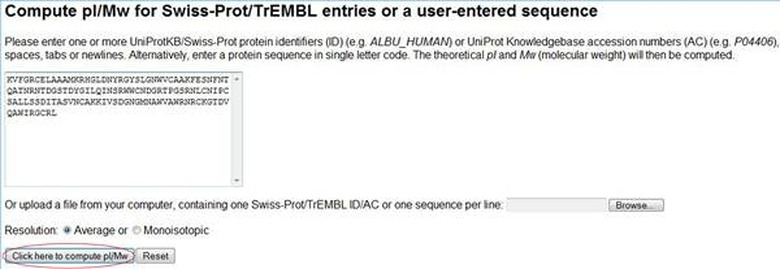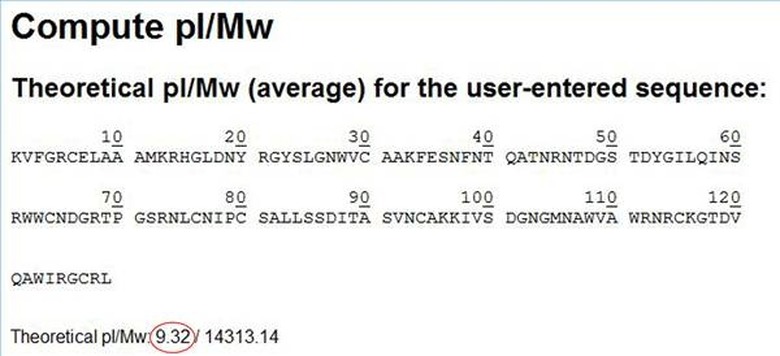How To Calculate The Isoelectric Point
The isoelectric point (pl) is the pH (index of solution acidity) at which a molecule in solution has zero net charge. This value is particularly important in biochemistry as a fundamental characteristic of proteins. Proteins have a positive net charge at pH of solution below the isoelectric point; they are negatively charged if pH is above it. The isoelectric point is the function of amino acid composition of a protein. Therefore, the amino acid protein sequence is necessary for the pI calculation.
Step 1
Decide how to obtain the protein sequence. If the sequence is already available, go directly to Section 2. Otherwise, obtain it from the Universal Protein Resource database (see Resources).
Step 2
Enter a protein name as keywords in the query field and click "Search."
Step 3
Scroll down the search results and find an appropriate entry. Write down the database accession number.
Step 4
Navigate to the ExPASy Server Computing Tool (see Resources).
Step 5
Enter the database accession number from Step 4 in the field and "Click here to compute pI/Mw."
Step 6
Click "Submit" on the next screen.
Step 7
Read the isoelectric point (pI) value.
Step 8
If the sequence was already available, navigate to the ExPASy Server Computing Tool (see Resources).
Step 9
Enter the sequence manually in the field or copy and paste from a file. Click "Click here to compute pI/Mw."
Step 10
Read the isoelectric point (pI) value.
Cite This Article
MLA
Contributor, . "How To Calculate The Isoelectric Point" sciencing.com, https://www.sciencing.com/calculate-isoelectric-point-5081940/. 24 April 2017.
APA
Contributor, . (2017, April 24). How To Calculate The Isoelectric Point. sciencing.com. Retrieved from https://www.sciencing.com/calculate-isoelectric-point-5081940/
Chicago
Contributor, . How To Calculate The Isoelectric Point last modified March 24, 2022. https://www.sciencing.com/calculate-isoelectric-point-5081940/


